Lab Alumni
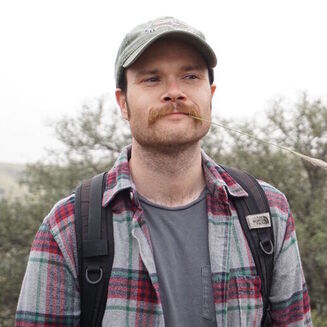
Dr. Drew
Schield (he/him)
NSF Postdoctoral Fellow.
Feb 2020 - December 2023
Drew is interested in the genomics of adaptation and speciation, and especially how evolutionary processes like recombination, gene flow, and selection shape diversity across the genomes of natural populations. He earned his Ph.D. in Todd Castoe’s lab at the University of Texas at Arlington, studying snake genomics and population genetics. His dissertation work focused on population structure and gene flow within the Western Rattlesnake species complex (Crotalus viridis + oreganus and relatives) and other related species (e.g., C. atrox and C. scutulatus). He continued work as a postdoc in the Castoe Lab for two years, working on questions related to genome structure and function in reptiles, snake sex chromosome evolution, and meiotic recombination in snakes.
In the Safran Lab, Drew studiedthe genomic architecture of speciation in barn swallows. His focused on the genomic landscape of divergence and how it relates to mate choice trait variation throughout the genus Hirundo. He is interested in using this framework to test the ‘genomic coupling’ hypothesis, which predicts that non-random associations between genomic regions underlying mate choice trait variation will accumulate over time, reducing gene flow and promoting reproductive isolation. Drew is currently an Assistant Professor at the University of Virgina! Check out his lab website!
Schield (he/him)
NSF Postdoctoral Fellow.
Feb 2020 - December 2023
Drew is interested in the genomics of adaptation and speciation, and especially how evolutionary processes like recombination, gene flow, and selection shape diversity across the genomes of natural populations. He earned his Ph.D. in Todd Castoe’s lab at the University of Texas at Arlington, studying snake genomics and population genetics. His dissertation work focused on population structure and gene flow within the Western Rattlesnake species complex (Crotalus viridis + oreganus and relatives) and other related species (e.g., C. atrox and C. scutulatus). He continued work as a postdoc in the Castoe Lab for two years, working on questions related to genome structure and function in reptiles, snake sex chromosome evolution, and meiotic recombination in snakes.
In the Safran Lab, Drew studiedthe genomic architecture of speciation in barn swallows. His focused on the genomic landscape of divergence and how it relates to mate choice trait variation throughout the genus Hirundo. He is interested in using this framework to test the ‘genomic coupling’ hypothesis, which predicts that non-random associations between genomic regions underlying mate choice trait variation will accumulate over time, reducing gene flow and promoting reproductive isolation. Drew is currently an Assistant Professor at the University of Virgina! Check out his lab website!
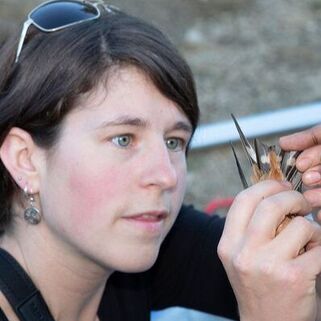
Dr. Molly McDermott (she/her)
ITG Fellow
National Geographic Young Explorer
PhD Fall 2017 - Spring 2022
Data Scientist, Side x Side May 2022 - 2023
BA Evergreen College 2012
MS Univ Alaska 2017
Molly studied the role of environmental context on trait expression and evolution. For her dissertation research, Molly used tag technology to track individual movements both locally and globally. She conducted exciting field experiments on life history trade offs, wrote a comprehensive review of how environmental context shapes morphological trait expression and analyzed the role of non-breeding context on trait development.During her time at CU and beyond, Molly has been an important collaborator on the Side x Side project.
Read more about Molly here
ITG Fellow
National Geographic Young Explorer
PhD Fall 2017 - Spring 2022
Data Scientist, Side x Side May 2022 - 2023
BA Evergreen College 2012
MS Univ Alaska 2017
Molly studied the role of environmental context on trait expression and evolution. For her dissertation research, Molly used tag technology to track individual movements both locally and globally. She conducted exciting field experiments on life history trade offs, wrote a comprehensive review of how environmental context shapes morphological trait expression and analyzed the role of non-breeding context on trait development.During her time at CU and beyond, Molly has been an important collaborator on the Side x Side project.
Read more about Molly here

Dr. Javan Carter (he/him)
NSF INTERN Fellow 2020
Fall 2017 - Spring 2022
BS Old Dominion University, 2016
Javan completed his Ph.D in the Ecology and Evolutionary Biology Department with a focus on evolutionary genomics. Javan's research focused on reconstructing phylogenetic hypotheses for the genus Hirundo and for the subspecies complex, Hirundo rustica, using genomics data sets. Javan loves working with undergraduate students in the lab and in the classroom and is a star mentor, teacher, and baker! Currently, Dr. Carter is a Bioinformatic Scientist at RTI International and the proud father of twins!
NSF INTERN Fellow 2020
Fall 2017 - Spring 2022
BS Old Dominion University, 2016
Javan completed his Ph.D in the Ecology and Evolutionary Biology Department with a focus on evolutionary genomics. Javan's research focused on reconstructing phylogenetic hypotheses for the genus Hirundo and for the subspecies complex, Hirundo rustica, using genomics data sets. Javan loves working with undergraduate students in the lab and in the classroom and is a star mentor, teacher, and baker! Currently, Dr. Carter is a Bioinformatic Scientist at RTI International and the proud father of twins!

Bridger Houston (he/him)
NSF REU student summer 2023
Bridger joined our lab in the spring of 2023, just after his graduation from CU Boulder with a BA in Ecology and Evolutionary Biology! He is interested in environmental ecology, particularly the impacts of human activity on ecological interactions within rural areas. Bridger is currently working as a field assistant for the 2023 season, collecting biological and behavioral data. He hopes to continue field work as his professional career develops!
NSF REU student summer 2023
Bridger joined our lab in the spring of 2023, just after his graduation from CU Boulder with a BA in Ecology and Evolutionary Biology! He is interested in environmental ecology, particularly the impacts of human activity on ecological interactions within rural areas. Bridger is currently working as a field assistant for the 2023 season, collecting biological and behavioral data. He hopes to continue field work as his professional career develops!

Gwen Harker (she/her)
Undergrad, BSI student Fall 2022 -
Gwen is a Junior majoring in Ecology and Evolutionary Biology with minors in Geology and Spanish. As a current BSI scholar, she is interested in nest selection within Barn Swallow colonies and variation in micro-habitat. She loves birds and is especially interested in conservation, animal behavior, and impacts of climate change on natural systems.
Undergrad, BSI student Fall 2022 -
Gwen is a Junior majoring in Ecology and Evolutionary Biology with minors in Geology and Spanish. As a current BSI scholar, she is interested in nest selection within Barn Swallow colonies and variation in micro-habitat. She loves birds and is especially interested in conservation, animal behavior, and impacts of climate change on natural systems.

Natalie Cloutier-Chaine (she/her)
Undergraduate, BSI Scholar
Spring 2022 - Spring 2024
Natalie was an undergraduate student pursuing a degree in Ecology and Evolutionary Biology with a minor in French at CU boulder. She is interested in animal behavior, conservation biology, and animal cognition. As a BSI continuing scholar, she is working on a behavioral project examining the role of vocal communication during incubation in barn swallows. Natalie graduated with honor's in Spring 2024 and is spending the year in Kenya working on a long term study of hyenas.
Undergraduate, BSI Scholar
Spring 2022 - Spring 2024
Natalie was an undergraduate student pursuing a degree in Ecology and Evolutionary Biology with a minor in French at CU boulder. She is interested in animal behavior, conservation biology, and animal cognition. As a BSI continuing scholar, she is working on a behavioral project examining the role of vocal communication during incubation in barn swallows. Natalie graduated with honor's in Spring 2024 and is spending the year in Kenya working on a long term study of hyenas.

Grace Murdoch (she/her)
Undergraduate, BSI Scholar
Spring 2023 - Spring 2024
Grace was an undergraduate student pursuing a degree in Ecology and Evolutionary Biology. She completed her honor's thesis and graduated with highest honors in Spring 2024. Grace's honor's thesis focused on adult communication during parental care in barn swallows.
Undergraduate, BSI Scholar
Spring 2023 - Spring 2024
Grace was an undergraduate student pursuing a degree in Ecology and Evolutionary Biology. She completed her honor's thesis and graduated with highest honors in Spring 2024. Grace's honor's thesis focused on adult communication during parental care in barn swallows.
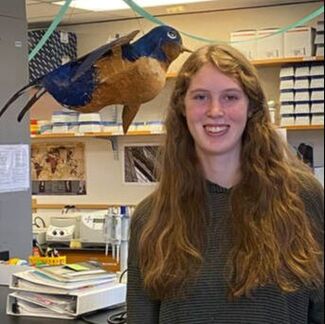
Isabelle Meredith (she/her)
Undergraduate, Independent Study, UROP scholar, EBIO honor's student
Fall 2021 - Fall 2023
Isabelle was a double major in EBIO and Computer Science. She worked on a database design to help organize and curate the lab's long term data! After being a part of the field team during summer 2022 as a UROP scholar, Isabelle pursued an honor's thesis in the lab which she successfully defended in April, 2023. Isabelle graduated with a double major in EBIO (summa cum laude) and Computer Science in May 2023 and worked with our group as a research assistant on long term database project! Isabelle is now a graduate student of BioStats at CU-Anzchutz.
Undergraduate, Independent Study, UROP scholar, EBIO honor's student
Fall 2021 - Fall 2023
Isabelle was a double major in EBIO and Computer Science. She worked on a database design to help organize and curate the lab's long term data! After being a part of the field team during summer 2022 as a UROP scholar, Isabelle pursued an honor's thesis in the lab which she successfully defended in April, 2023. Isabelle graduated with a double major in EBIO (summa cum laude) and Computer Science in May 2023 and worked with our group as a research assistant on long term database project! Isabelle is now a graduate student of BioStats at CU-Anzchutz.
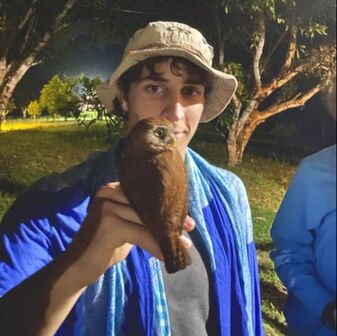
Quinn Adams(he/him)
NSF REU fellow, Summer 2023 - Spring 2024
Quinn joined the Safran lab in the summer of 2023. He graduated with a dual major degree in EBIO and ENVS in spring 2024. Some of his academic interests include adaptive behavior, ecological community resilience, and how biological processes can inform solutions to modern day problems. After graduating in the Spring of 2024, he plans on hiking the PCT, working on farms across the country to see first hand how regenerative principles are being used in agriculture, and enrolling in graduate school. Outside of his studies, he enjoys climbing, running, exploring in nature, making things with his hands, and taking pictures.
NSF REU fellow, Summer 2023 - Spring 2024
Quinn joined the Safran lab in the summer of 2023. He graduated with a dual major degree in EBIO and ENVS in spring 2024. Some of his academic interests include adaptive behavior, ecological community resilience, and how biological processes can inform solutions to modern day problems. After graduating in the Spring of 2024, he plans on hiking the PCT, working on farms across the country to see first hand how regenerative principles are being used in agriculture, and enrolling in graduate school. Outside of his studies, he enjoys climbing, running, exploring in nature, making things with his hands, and taking pictures.

Avani Fachon (she/her)
Undergraduate, Honor's thesis, NSF REU student, NSF postbac fellow
Fall 2020 - Spring 2023
Avani is passionate about developing science outreach projects which unite the practices of ecological research, storytelling, and media production to inspire action towards a more sustainable future. In December 2021, she graduated with a B.A. in Ecology and Evolutionary Biology with a minor in Media Production from University of Colorado Boulder. In the Safran Lab, she completed her honors thesis, Rituals of this Good Earth, which explores barn swallow-human interconnections through a multimedia, interactive website. Avani assisted with two barn swallow field seasons in 2021 and 2022. Her second field season was part of her year-long NSF Post-Baccalaureate Fellowship with the lab, during which she also worked on an independent research project examining landscape use by barn swallows and assisted with various other lab projects. She was also deeply involved with the lab’s art-science outreach initiative, Side by Side.
Undergraduate, Honor's thesis, NSF REU student, NSF postbac fellow
Fall 2020 - Spring 2023
Avani is passionate about developing science outreach projects which unite the practices of ecological research, storytelling, and media production to inspire action towards a more sustainable future. In December 2021, she graduated with a B.A. in Ecology and Evolutionary Biology with a minor in Media Production from University of Colorado Boulder. In the Safran Lab, she completed her honors thesis, Rituals of this Good Earth, which explores barn swallow-human interconnections through a multimedia, interactive website. Avani assisted with two barn swallow field seasons in 2021 and 2022. Her second field season was part of her year-long NSF Post-Baccalaureate Fellowship with the lab, during which she also worked on an independent research project examining landscape use by barn swallows and assisted with various other lab projects. She was also deeply involved with the lab’s art-science outreach initiative, Side by Side.

Aleea Pardue (she/her)
Undergraduate, Independent study, BSI scholar, NSF REU student
Spring 2021 - Spring 2023
Aleea was an EBIO/Art major. She worked with us in the field as a BSI scholar in the summer 2021 and continued on in the lab until she graduated in spring 2023. Aleea took on more of a leadership role on the field team during summer 2022. During her time in our lab, Aleea worked on a number of projects both in the field (parental behavior, reproductive success) and i the lab (blood cell types, blood parasites). Aleea is also a very talented artist, with a focus on ceramics art.
Undergraduate, Independent study, BSI scholar, NSF REU student
Spring 2021 - Spring 2023
Aleea was an EBIO/Art major. She worked with us in the field as a BSI scholar in the summer 2021 and continued on in the lab until she graduated in spring 2023. Aleea took on more of a leadership role on the field team during summer 2022. During her time in our lab, Aleea worked on a number of projects both in the field (parental behavior, reproductive success) and i the lab (blood cell types, blood parasites). Aleea is also a very talented artist, with a focus on ceramics art.

Dr. Loren Merrill
Research Affiliate 2019 - 2021
Loren is a research affiliate in the lab as well as at the University of Illinois, Champaign-Urbana, where he worked as a postdoctoral researcher and fellow. Loren conducted his Ph.D. at the University of California, Santa Barbara with Dr. Steve Rothstein examining the relationships among reproductive strategy, sexual signals, immune function, and glucocorticoid hormones in the brood parasitic brown-headed cowbird and its non-parasitic relative, the red-winged blackbird. Loren did a one-year postdoc at Oklahoma State University with Dr. Jennifer Grindstaff focusing on the role of early-life stress on a suite of behavioral, morphological, and physiological traits in zebra finches. His research focus now combines landscape ecology, ecophysiology, parasitology, and behavioral ecology to understand how early-life conditions impact short and long-term growth and condition in wild birds. Loren is also an avid nature photographer and writer, and has been writing a blog that combines his love of natural history with his love of photography. To read his blog click on the link: https://lorenmerrill.weebly.com/theviewoutthedoor
and for his homepage click here: https://lorenmerrill.weebly.com/
Research Affiliate 2019 - 2021
Loren is a research affiliate in the lab as well as at the University of Illinois, Champaign-Urbana, where he worked as a postdoctoral researcher and fellow. Loren conducted his Ph.D. at the University of California, Santa Barbara with Dr. Steve Rothstein examining the relationships among reproductive strategy, sexual signals, immune function, and glucocorticoid hormones in the brood parasitic brown-headed cowbird and its non-parasitic relative, the red-winged blackbird. Loren did a one-year postdoc at Oklahoma State University with Dr. Jennifer Grindstaff focusing on the role of early-life stress on a suite of behavioral, morphological, and physiological traits in zebra finches. His research focus now combines landscape ecology, ecophysiology, parasitology, and behavioral ecology to understand how early-life conditions impact short and long-term growth and condition in wild birds. Loren is also an avid nature photographer and writer, and has been writing a blog that combines his love of natural history with his love of photography. To read his blog click on the link: https://lorenmerrill.weebly.com/theviewoutthedoor
and for his homepage click here: https://lorenmerrill.weebly.com/

Dr. Angela Medina-García
NSF Postdoctoral Fellow January 2018-May 2021
PhD, New Mexico State University (2017)
MS Biology, Bowling Green State University (2011)
Understanding the evolutionary mechanisms that have shaped animal cognition is a cornerstone of animal behavior research. Cognitive processes govern many aspects of an individual’s life and thus cognitive abilities have an immense impact on fitness. In order to understand how animal cognition has evolved, it is paramount to quantify individual variation in cognitive traits across individuals, to examine non-cognitive factors that potentially influence this variation, and to examine fitness consequences of cognition. My dissertation focused on the role of mate selection in the evolution of cognitive traits and the impacts of such traits on male reproductive success in budgerigars. I also examined the effects of personality and physiological response to stress on individual variation on cognitive performance.
Barn swallows breed either in solitary pairs or in colonies with multiple breeding pairs. Therefore, this species is an ideal system to make ecologically and phylogenetically controlled comparisons of cognitive traits among individuals of the same population with a varying degree of sociality. I obtained an NSF postdoctoral fellowship to evaluate the impacts of social breeding on the evolution of cognitive traits. I am currently measuring individual variation in cognitive traits and their impact on reproductive success. I will also test natal and environmental influences on these traits tested along a low-high degree of sociality continuum.
Read more about Angela here
NSF Postdoctoral Fellow January 2018-May 2021
PhD, New Mexico State University (2017)
MS Biology, Bowling Green State University (2011)
Understanding the evolutionary mechanisms that have shaped animal cognition is a cornerstone of animal behavior research. Cognitive processes govern many aspects of an individual’s life and thus cognitive abilities have an immense impact on fitness. In order to understand how animal cognition has evolved, it is paramount to quantify individual variation in cognitive traits across individuals, to examine non-cognitive factors that potentially influence this variation, and to examine fitness consequences of cognition. My dissertation focused on the role of mate selection in the evolution of cognitive traits and the impacts of such traits on male reproductive success in budgerigars. I also examined the effects of personality and physiological response to stress on individual variation on cognitive performance.
Barn swallows breed either in solitary pairs or in colonies with multiple breeding pairs. Therefore, this species is an ideal system to make ecologically and phylogenetically controlled comparisons of cognitive traits among individuals of the same population with a varying degree of sociality. I obtained an NSF postdoctoral fellowship to evaluate the impacts of social breeding on the evolution of cognitive traits. I am currently measuring individual variation in cognitive traits and their impact on reproductive success. I will also test natal and environmental influences on these traits tested along a low-high degree of sociality continuum.
Read more about Angela here

Sage Madden
Honor's thesis student/ NSF REU student summer 2020
Fall 2018 - Fall 2020
Sage is broadly interested in the fields of animal behavior and conservation biology. She is particularly interested in how organisms adapt to novel environments and how wildlife and humans interact in anthropogenic landscapes. Sage is currently working on an undergraduate Honors thesis in the Safran lab examining how female Barn Swallows alter their foraging and parental care behavior in response to changes in brood size. She has been working closely with PhD student Molly McDermott since Fall 2018. Sage is currently a NSF graduate fellow and a PhD candidate at UC Davis!
Honor's thesis student/ NSF REU student summer 2020
Fall 2018 - Fall 2020
Sage is broadly interested in the fields of animal behavior and conservation biology. She is particularly interested in how organisms adapt to novel environments and how wildlife and humans interact in anthropogenic landscapes. Sage is currently working on an undergraduate Honors thesis in the Safran lab examining how female Barn Swallows alter their foraging and parental care behavior in response to changes in brood size. She has been working closely with PhD student Molly McDermott since Fall 2018. Sage is currently a NSF graduate fellow and a PhD candidate at UC Davis!
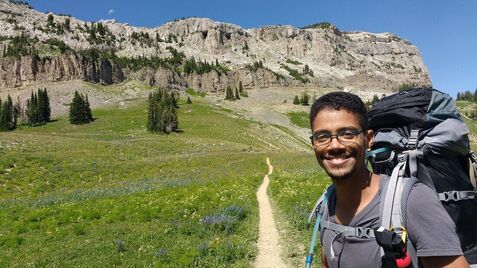
Jonté Allen
BA student Spring 2020
Jonté Allen is a senior in the CU Boulder EBIO department who is currently interested in the application of evolutionary theory in human development at the individual level as well as the species level. Specifically, he is fascinated by the development of cognition, large social structures, language, and cultural traditions. Also among his interests are the relationship of commensalism and intellectual development, the consequences of instinct upon individual psychology, the application of evolutionary concepts to seemingly unrelated disciplines, the ongoing evolution of humanity through sexual selection, and the field of scientific education. When not studying, he can be found on the soccer field in the summer and on the ski slopes in the winter.
BA student Spring 2020
Jonté Allen is a senior in the CU Boulder EBIO department who is currently interested in the application of evolutionary theory in human development at the individual level as well as the species level. Specifically, he is fascinated by the development of cognition, large social structures, language, and cultural traditions. Also among his interests are the relationship of commensalism and intellectual development, the consequences of instinct upon individual psychology, the application of evolutionary concepts to seemingly unrelated disciplines, the ongoing evolution of humanity through sexual selection, and the field of scientific education. When not studying, he can be found on the soccer field in the summer and on the ski slopes in the winter.

Chris Smith
PhD candidate
NSF Graduate Research Fellow, BioFrontiers Fellow. Fall 2014 -2020
BS Univ Texas 2012
Chris is an honorary member of the lab. He is co-advised by Sam Flaxman and Nolan Kane and his doing his dissertation research on demographic analyses using genomic data sets from barn swallows. Chris graduated from the University of Texas in 2012, worked at UC Davis in Mike Turelli's group from 2013 - 2014 and joined CU's Interdisciplinary Quantitative biology (IQ BIO) program in Fall 2014. You will mostly find Chris coding on his laptop somewhere but we had to at least get him out to the field once to check out the barn swallows (pictured here).
PhD candidate
NSF Graduate Research Fellow, BioFrontiers Fellow. Fall 2014 -2020
BS Univ Texas 2012
Chris is an honorary member of the lab. He is co-advised by Sam Flaxman and Nolan Kane and his doing his dissertation research on demographic analyses using genomic data sets from barn swallows. Chris graduated from the University of Texas in 2012, worked at UC Davis in Mike Turelli's group from 2013 - 2014 and joined CU's Interdisciplinary Quantitative biology (IQ BIO) program in Fall 2014. You will mostly find Chris coding on his laptop somewhere but we had to at least get him out to the field once to check out the barn swallows (pictured here).

Ellen Scherner, BSI, NSF REU student
Summer 2019- Summer 2020
Ellen worked closely with our team during the field season in 2019 and is currently analyzing from several field experiments, in collaboration with postdoc Angela Medina Garcia. She hopes to conduct an acoustic analysis of Barn Swallow alarm calls throughout the semester as well. In the future, she plans on continuing her educational journey in research, hopefully in conservation or wildlife biology.
Summer 2019- Summer 2020
Ellen worked closely with our team during the field season in 2019 and is currently analyzing from several field experiments, in collaboration with postdoc Angela Medina Garcia. She hopes to conduct an acoustic analysis of Barn Swallow alarm calls throughout the semester as well. In the future, she plans on continuing her educational journey in research, hopefully in conservation or wildlife biology.
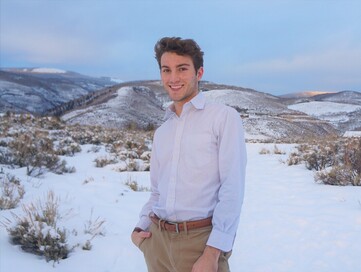
Bryan Martino, Independent Research
Spring 2020
Currently a sophomore undergraduate, double-majoring in EBIO and Environmental Design, I’m interested in discovering how male and female barn swallows differ in their carbon isotope ratios, and how this reflects the ecologies of their winter habitats. Another objective is to cultivate skills in stable isotope analysis to prepare me for climate-related research in marine sciences. In the larger field of evolutionary biology, I’m most passionate about sustainability and climate resilience of species. Creative skills in design practices will help me examine how the built environment can better integrate the natural world in context to a growing need for such resilience. Outside of lab, I love to run and spend time with the CU Bee Club!
Spring 2020
Currently a sophomore undergraduate, double-majoring in EBIO and Environmental Design, I’m interested in discovering how male and female barn swallows differ in their carbon isotope ratios, and how this reflects the ecologies of their winter habitats. Another objective is to cultivate skills in stable isotope analysis to prepare me for climate-related research in marine sciences. In the larger field of evolutionary biology, I’m most passionate about sustainability and climate resilience of species. Creative skills in design practices will help me examine how the built environment can better integrate the natural world in context to a growing need for such resilience. Outside of lab, I love to run and spend time with the CU Bee Club!
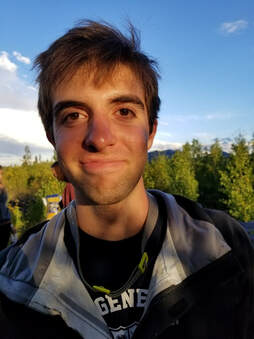
Noah Goodkind,
BSI, Independent Study Summer and Fall 2019
My broad area of interest is centered around human management of natural lands and resources. I find the question of how to balance the needs of society versus maintaining a healthy environment an interesting and tricky one. My current project revolves around using GPS and land cover data to try and determine land or water features that the birds forage near.
BSI, Independent Study Summer and Fall 2019
My broad area of interest is centered around human management of natural lands and resources. I find the question of how to balance the needs of society versus maintaining a healthy environment an interesting and tricky one. My current project revolves around using GPS and land cover data to try and determine land or water features that the birds forage near.
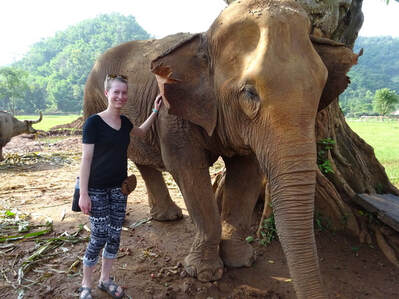
Brittney Lafond Independent Study
Fall 2019 - Summer 2020
Brittney's research interests include anything that involves animals in some way. Specifically, she loves learning about how alterations to an environment or mating practice can impact members of a species. So many species have unique behaviors or appearances that have yet to be fully explored and she is interested in any kind of research that delves deeper into the why of species behaviors. Brittney is currently investigating how altering brood size and the addition of a physical handicap may impact the immune status of female barn swallows.
Fall 2019 - Summer 2020
Brittney's research interests include anything that involves animals in some way. Specifically, she loves learning about how alterations to an environment or mating practice can impact members of a species. So many species have unique behaviors or appearances that have yet to be fully explored and she is interested in any kind of research that delves deeper into the why of species behaviors. Brittney is currently investigating how altering brood size and the addition of a physical handicap may impact the immune status of female barn swallows.

Sheela Turbek
PhD candidate
NSF Graduate Research Fellow
Fall 2015 - Spring 2019
BA Bowdoin College 2013
Behavioral and phenotypic traits are thought to play a key role early in speciation by influencing where and when individuals come into contact and whether closely related organisms are recognized as potential mates. I am studying the prevalence and mechanistic basis of assortative mating in two recent avian radiations: the barn swallow species complex and the southern capuchino seedeaters, a highly sympatric radiation in South America, to better understand the processes that limit gene flow during incipient speciation. Barn swallows exhibit extensive variation in migratory behavior, while capuchino seedeaters are characterized by striking differences in male plumage coloration and song. My research combines fine-scale behavioral analyses with phenotypic and genomic data collected in areas of geographic contact between closely related species to investigate the importance of pre-mating processes for the generation of biodiversity.
PhD candidate
NSF Graduate Research Fellow
Fall 2015 - Spring 2019
BA Bowdoin College 2013
Behavioral and phenotypic traits are thought to play a key role early in speciation by influencing where and when individuals come into contact and whether closely related organisms are recognized as potential mates. I am studying the prevalence and mechanistic basis of assortative mating in two recent avian radiations: the barn swallow species complex and the southern capuchino seedeaters, a highly sympatric radiation in South America, to better understand the processes that limit gene flow during incipient speciation. Barn swallows exhibit extensive variation in migratory behavior, while capuchino seedeaters are characterized by striking differences in male plumage coloration and song. My research combines fine-scale behavioral analyses with phenotypic and genomic data collected in areas of geographic contact between closely related species to investigate the importance of pre-mating processes for the generation of biodiversity.
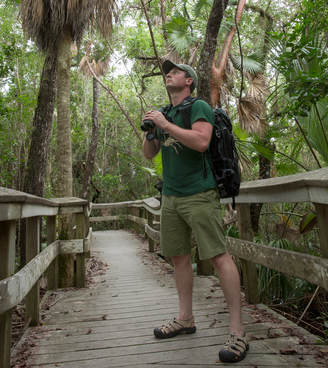
Georgy Semenov
Postdoctoral Fellow
Feb 2018 - Feb 2019
I am broadly interested in studying the mechanisms of adaptation and speciation. In particular, I take advantage of avian hybrid zones to infer what components of phenotypic and genetic variation act as barriers to gene exchange between nascent species and what processes promote and maintain such variation.
Barn swallows have a number of features in common with the white wagtail – a bird I studied throughout my master's and doctoral research. Both species underwent recent and extensive phenotypic diversifications and have multiple hybrid zones across Eurasia, presenting great study systems for asking key questions in evolutionary biology. At the University of Colorado I will use genomic tools to study genetic basis of migratory behavior and its contribution to the patterns of phenotypic and genomic divergence across the barn swallow subspecies.
To learn more about Georgy, go here
Postdoctoral Fellow
Feb 2018 - Feb 2019
I am broadly interested in studying the mechanisms of adaptation and speciation. In particular, I take advantage of avian hybrid zones to infer what components of phenotypic and genetic variation act as barriers to gene exchange between nascent species and what processes promote and maintain such variation.
Barn swallows have a number of features in common with the white wagtail – a bird I studied throughout my master's and doctoral research. Both species underwent recent and extensive phenotypic diversifications and have multiple hybrid zones across Eurasia, presenting great study systems for asking key questions in evolutionary biology. At the University of Colorado I will use genomic tools to study genetic basis of migratory behavior and its contribution to the patterns of phenotypic and genomic divergence across the barn swallow subspecies.
To learn more about Georgy, go here
Dr. Liz Scordato,
NSF Postdoctoral Fellow
Nov 2012 - Nov 2017
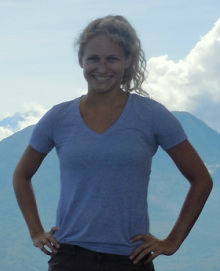
BSc Duke University 2004
PhD University of Chicago 2012
My research focuses on determining causes of variation in sexually selected traits, and understanding the consequences of this variation for population divergence and speciation. In my doctoral work, I studied how inter- and intrasexual selection interact with environmental variability to drive divergence and generate prezygotic reproductive barriers in the greenish warbler (Phylloscopus trochiloides) ring species complex of Central Asia.
At the University of Colorado, I am working on the genomics of population divergence in the barn swallow (Hirundo rustica) complex. This widespread species has recently diverged into several subspecies that differ in plumage phenotype and migratory patterns, yet remain apparent ecological equivalents. Using a combination of intensive fieldwork, quantitative genetics, and next-gen sequencing, we are assessing the relative contributions of divergent natural and sexual selection (i.e. isolation by adaptation) vs. isolation by distance to both phenotypic and genomic divergence in this group.
Liz is now an Assistant Professor at Cal Poly, Pomona. Read more about Liz here
PhD University of Chicago 2012
My research focuses on determining causes of variation in sexually selected traits, and understanding the consequences of this variation for population divergence and speciation. In my doctoral work, I studied how inter- and intrasexual selection interact with environmental variability to drive divergence and generate prezygotic reproductive barriers in the greenish warbler (Phylloscopus trochiloides) ring species complex of Central Asia.
At the University of Colorado, I am working on the genomics of population divergence in the barn swallow (Hirundo rustica) complex. This widespread species has recently diverged into several subspecies that differ in plumage phenotype and migratory patterns, yet remain apparent ecological equivalents. Using a combination of intensive fieldwork, quantitative genetics, and next-gen sequencing, we are assessing the relative contributions of divergent natural and sexual selection (i.e. isolation by adaptation) vs. isolation by distance to both phenotypic and genomic divergence in this group.
Liz is now an Assistant Professor at Cal Poly, Pomona. Read more about Liz here
Amanda Hund, PhD student, Fall 2011 - Fall 2017
NSF Graduate Research Fellow
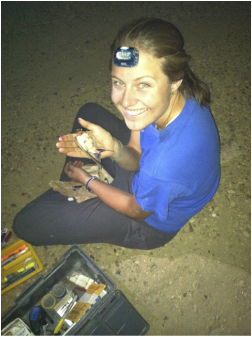
BA Carleton College 2010
On a large scale I am interested in how new species form and in the underlying causes of diversity. In particular, my research focuses on how sexual selection and parasites could be mediating speciation across closely related populations. I am hoping to better understand how coevolution between hosts and local populations of parasites could act as a selective force to create reproductive barriers. Using three different barn swallow subspecies with divergent sexual selection, I am studying what information different sexual signals are giving to females about parasites, immune systems, and nest environments. In order to look at what females gain by choosing attractive mates and how this could be changing across populations, I am looking across a wide range of avian parasites and immune measures, as well as performing field experiments (cross-foster). Initial data suggests that the expression of different sexual traits links with parasite loads on males in at least two subspecies- suggesting that these traits could be advertising information about parasite resistance, and that this is changing across subspecies.
Amanda is currently a postdoctoral fellow at the University of Minnesota.
Read more about Amanda here
On a large scale I am interested in how new species form and in the underlying causes of diversity. In particular, my research focuses on how sexual selection and parasites could be mediating speciation across closely related populations. I am hoping to better understand how coevolution between hosts and local populations of parasites could act as a selective force to create reproductive barriers. Using three different barn swallow subspecies with divergent sexual selection, I am studying what information different sexual signals are giving to females about parasites, immune systems, and nest environments. In order to look at what females gain by choosing attractive mates and how this could be changing across populations, I am looking across a wide range of avian parasites and immune measures, as well as performing field experiments (cross-foster). Initial data suggests that the expression of different sexual traits links with parasite loads on males in at least two subspecies- suggesting that these traits could be advertising information about parasite resistance, and that this is changing across subspecies.
Amanda is currently a postdoctoral fellow at the University of Minnesota.
Read more about Amanda here
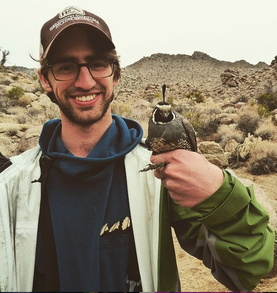
Kyle Donahue, BA-MA student, Fall 2015 - Spring 2016
BA University of Colorado 2015
MA University of Colorado 2016
Kyle completed an honor's thesis in our lab group on fine-scale nest movement decisions of barn swallows. He stayed on to do exceptionally well in the BA-MA program and completed his MA in spring 2016. For his MA degree, Kyle studied the role of predation and parasites on nest site selection patterns of barn swallows. Read Kyle's recent publication here.
BA University of Colorado 2015
MA University of Colorado 2016
Kyle completed an honor's thesis in our lab group on fine-scale nest movement decisions of barn swallows. He stayed on to do exceptionally well in the BA-MA program and completed his MA in spring 2016. For his MA degree, Kyle studied the role of predation and parasites on nest site selection patterns of barn swallows. Read Kyle's recent publication here.
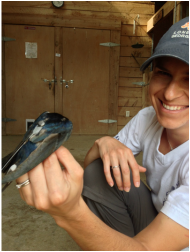
Iris Levin, NSF postdoctoral fellow,
May 2014 - July 2016
BA Bowdoin College 2005
PhD University of Missouri - St. Louis 2011
Iris was awarded a National Science Foundation Postdoctoral Research Fellowship, Intersections of Biology, Mathematics, Physical Science and Engineering to work on social networks.
The goal of my postdoctoral research is to understand the interface between social behavior, physiology and parasite transmission by testing hypotheses that integrate themes from evolutionary biology, behavioral ecology and wildlife epidemiology, within the mathematical framework of social network theory. There are gaps in our knowledge of social transactions related to the difficulty obtaining accurate measures of social interactions, the lack of experimentation within social networks, and the analytical challenges associated with robust statistical comparisons of networks. We are currently working with Dr. John Burt, who develops Encounternet digital transceiver tags for obtaining social contact data, and Dr. Juan Restrepo, an applied mathematician who specializes in network dynamics.
Iris is currently an Associate Professor of Biology at Kenyon College.
Read more about Iris here
May 2014 - July 2016
BA Bowdoin College 2005
PhD University of Missouri - St. Louis 2011
Iris was awarded a National Science Foundation Postdoctoral Research Fellowship, Intersections of Biology, Mathematics, Physical Science and Engineering to work on social networks.
The goal of my postdoctoral research is to understand the interface between social behavior, physiology and parasite transmission by testing hypotheses that integrate themes from evolutionary biology, behavioral ecology and wildlife epidemiology, within the mathematical framework of social network theory. There are gaps in our knowledge of social transactions related to the difficulty obtaining accurate measures of social interactions, the lack of experimentation within social networks, and the analytical challenges associated with robust statistical comparisons of networks. We are currently working with Dr. John Burt, who develops Encounternet digital transceiver tags for obtaining social contact data, and Dr. Juan Restrepo, an applied mathematician who specializes in network dynamics.
Iris is currently an Associate Professor of Biology at Kenyon College.
Read more about Iris here
Joanna Hubbard, PhD
Fall 2008 - Fall 2014
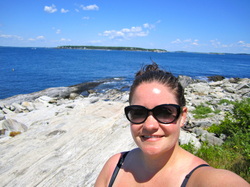
BS University of Arizona 2004
MS College of William and Mary 2008
I am broadly interested in the evolution and maintenance of of sexual signals. More specifically, I am interested in understanding the proximate and ultimate mechanisms that control plumage color in birds. My dissertation research focuses on understanding the color variation seen within and between subspecies of barn swallows. I am using a quantitative genetics approach to understand the roles that genes and environment play in the development of phenotypic variation. Preliminary results suggest that both genes and environment are significant sources of phenotypic variation and I am currently working to isolate the effect of each individually. I am also using a candidate gene approach to explore allelic variation in known vertebrate pigmentation genes between phenotypically divergent populations. By using a comparative framework, I hope to provide a better understanding of how variable selection on ventral plumage color between populations has contributed to population divergence in the barn swallow species complex.
Joey is currently an Associate Professor at Truman State University.
Read more about Joey here
MS College of William and Mary 2008
I am broadly interested in the evolution and maintenance of of sexual signals. More specifically, I am interested in understanding the proximate and ultimate mechanisms that control plumage color in birds. My dissertation research focuses on understanding the color variation seen within and between subspecies of barn swallows. I am using a quantitative genetics approach to understand the roles that genes and environment play in the development of phenotypic variation. Preliminary results suggest that both genes and environment are significant sources of phenotypic variation and I am currently working to isolate the effect of each individually. I am also using a candidate gene approach to explore allelic variation in known vertebrate pigmentation genes between phenotypically divergent populations. By using a comparative framework, I hope to provide a better understanding of how variable selection on ventral plumage color between populations has contributed to population divergence in the barn swallow species complex.
Joey is currently an Associate Professor at Truman State University.
Read more about Joey here
Cait Dmitriew, NSERC postdoctoral fellow 2011-2014
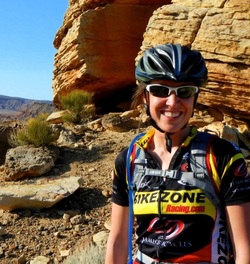
BSc University of Toronto 2003
PhD University of Toronto 2010
Broadly, my research interests lie in understanding the origins of diversity. My doctoral thesis examined why organisms often grow at submaximal rates, despite the known advantages of large body size and rapid development times. Ongoing research looks at the factors that maintain genetic diversity in traits under selection, including environmental variation and genic capture.
At the University of Colorado Boulder, I am studying the role of sexual selection in the among-population diversification of the black scavenger fly Sepsis punctum. Populations of this geographically widespread species vary dramatically in the magnitude and direction of sexual size dimorphism, as well as in mating behavior. The relative roles of sexual and ecological selection in promoting reproductive isolation remain controversial: by observing mating behavior within and among populations, I can assess the role of sexual conflict and female preferences in driving reproductive isolation of ecologically similar species.
Kate is completing her medical degree and associated residency in family medicine!
PhD University of Toronto 2010
Broadly, my research interests lie in understanding the origins of diversity. My doctoral thesis examined why organisms often grow at submaximal rates, despite the known advantages of large body size and rapid development times. Ongoing research looks at the factors that maintain genetic diversity in traits under selection, including environmental variation and genic capture.
At the University of Colorado Boulder, I am studying the role of sexual selection in the among-population diversification of the black scavenger fly Sepsis punctum. Populations of this geographically widespread species vary dramatically in the magnitude and direction of sexual size dimorphism, as well as in mating behavior. The relative roles of sexual and ecological selection in promoting reproductive isolation remain controversial: by observing mating behavior within and among populations, I can assess the role of sexual conflict and female preferences in driving reproductive isolation of ecologically similar species.
Kate is completing her medical degree and associated residency in family medicine!
Matt Wilkins, PhD, Fall 2008 - Spring 2014
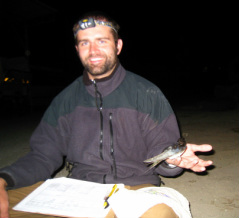
Matt completed his PhD, entitled "Evolutionary divergence in sexual signals: insights from within and among barn swallow populations." After working as a postdoctoral fellow at the University of Nebraska-Lincoln, with Drs. Dai Shizuka and Eileen Hebets, Matt is now working on Science Communication as a fellow at Vanderbilt University.
Find out more about Matt's terrific research and science communication work here.
Find out more about Matt's terrific research and science communication work here.
Yoni Vortman, PhD, Fall 2008 - Fall 2013
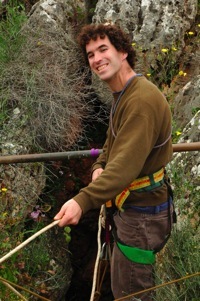
Yoni completed his PhD at Tel-Aviv University and is co-advised by Dr. Arnon Lotem and Rebecca Safran. Yoni is currently an Assistant Professor of Biology at Tel-Hai College, Israel.
I am interested in the evolutionary forces driving the endless variation in nature. Specifically I am interested in cases where selection on the individual, such as mate choice and sexual selection, and population level forces, such as gene flow and genetic drift, interact.
Yoni is now an Assistant Professor at Tel-Hai College, Israel. Read more about Yoni here.
I am interested in the evolutionary forces driving the endless variation in nature. Specifically I am interested in cases where selection on the individual, such as mate choice and sexual selection, and population level forces, such as gene flow and genetic drift, interact.
Yoni is now an Assistant Professor at Tel-Hai College, Israel. Read more about Yoni here.
Rachel Wildrick, BA-MA student,
Fall 2008-Spring 2013
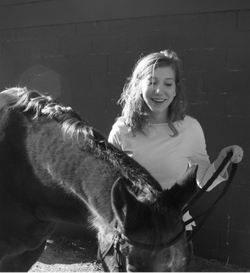
BA University of Colorado 2012
MA University of Colorado 2013
I am interested in how small-scale interactions can determine broad-scale species patterns and change; how mate-choice can shape population divergence, or how individual experiences produce patterns of age-related reproduction. For my honor and master’s theses, I have focused on how life history patterns of age-related reproductive performance are played out in an individual’s lifetime by studying the relative influence of different factors on reproductive success each year.
MA University of Colorado 2013
I am interested in how small-scale interactions can determine broad-scale species patterns and change; how mate-choice can shape population divergence, or how individual experiences produce patterns of age-related reproduction. For my honor and master’s theses, I have focused on how life history patterns of age-related reproductive performance are played out in an individual’s lifetime by studying the relative influence of different factors on reproductive success each year.
Brittany Jenkins, MA Fall 2010 - Dec 2012

I’m most excited about the physiological processes underlying sexually-selected traits. More specifically, I am investigating the relationship between the stress hormone corticosterone (CORT) and the sexually selected melanin-based plumage color of male North American barn swallows. CORT is important in initiating the stress response, which is aimed at increasing immediate survival when an individual is faced with a challenge (e.g. presence of a predator, competitive interactions). Therefore, it may play a crucial role in shaping behavior essential to survival and reproduction, and plumage color could signal to potential mates a male’s ability to cope with stressors. I am also looking at the potential for selection to shape individual variation in the stress response. Natural populations of avian species are highly variable in both baseline and stress-induced CORT concentrations, which is shown to be correlated with different measures of fitness. Part of my thesis research aims to elucidate the heritability of CORT, as well as the relationships of CORT profiles with reproductive success and survivorship.
As of fall 2015, Brittany is a PhD student at Montana State University.
As of fall 2015, Brittany is a PhD student at Montana State University.
Maren Vitousek, postdoc 2008 - 2012
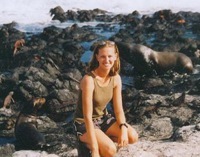
Maren worked on various questions related to the dynamic interactions between physiology, morphology and behavior with a focus on stress hormones and life history variation. Maren is currently an Assistant Professor in the Department of Ecology and Evolutionary Biology at Cornell University. Read more about Maren's work here.
Roi Dor, postdoc 2011 - 2012

Roi was a postdoctoral researcher in our group from summer 2011 through summer 2012. Roi is currently an Assistant Professor at Tel-Aviv University. Read more about Roi's work here.
Andrew Flynn, BA-MA student 2008 - 2012
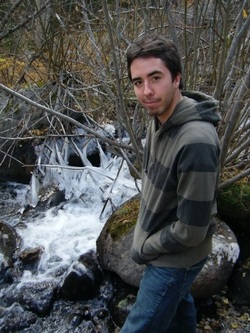
Andrew completed a BA-MA degree in our lab. Andrew worked on questions related to nest predation, paternity and morphological variation in barn swallows. Read more about Andrew here